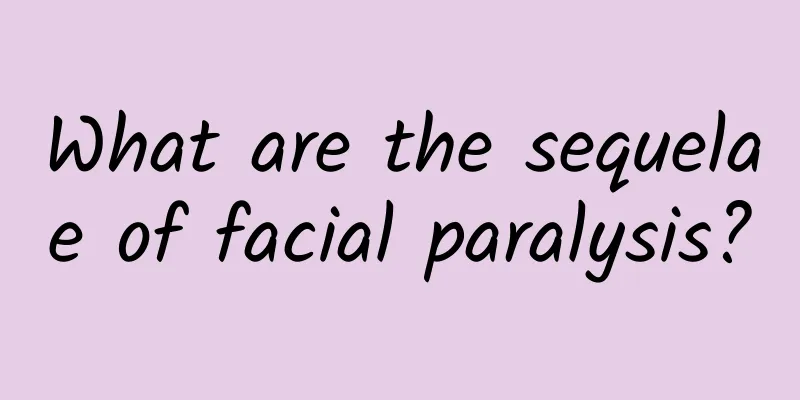What are the sequelae of facial paralysis?

|
Since facial paralysis does not cause pain or discomfort to patients, many patients do not pay enough attention to it and mistakenly believe that facial paralysis will recover automatically. In fact, facial paralysis can be cured through treatment. The most difficult to treat is not facial paralysis, but the sequelae of facial paralysis. The main cause of facial paralysis is damage to the facial nerves. So what are the sequelae of facial paralysis? First, what are the sequelae of facial paralysis? The main symptoms of sequelae of facial paralysis include the corners of the mouth moving toward the affected side when the eyes are closed, or the affected side closing the eyes when the corners of the mouth move; the chronic involuntary spasm or twitching of the facial expression muscles on one side. The sequelae of facial paralysis are mostly manifested as twitching of the eyelids, quadratus labii superioris and levator anguli oris muscles, crooked mouth, smaller palpebral fissure on the affected side, and sometimes facial muscle atrophy. Patients with sequelae of facial paralysis often shed tears accompanied by hemifacial spasm or diffuse facial muscle reactions. Second, the nasolabial fold on the affected side of patients with sequelae of facial paralysis deepens. When the eye on the affected side is closed, the corners of the mouth diverge upward and outward. Compared with the healthy side, the palpebral fissure on the affected side is shortened. In cold weather and in the early morning, the affected side of the face may feel stiff, contracted, or twitching. At this time, avoid electrical stimulation of the face, reduce facial stimulation or change the treatment method. Third, the patient raises his eyebrows or the amplitude of the eyebrow raising is relatively low, the eyelids are relatively loose, the groove between the nose and lips is relatively shallow, the corners of the mouth are relatively skewed, water leaks when brushing teeth, the face is relatively stiff, food stagnation, tears, etc. The sequelae of facial paralysis will prevent the patient's eyes from closing completely, and the cornea will usually be exposed, which is very likely to cause infection or injury. The occurrence of sequelae can lead to the decline of facial function of patients and affect their normal life. What are the sequelae of facial paralysis? In the late stage of facial paralysis, all facial expression muscles on one side are mainly paralyzed, more on the left side than on the right side. The wrinkles on the forehead on the affected side disappear, the eye closes incompletely, the palpebral fissure widens, the eyelids are everted, and the patient is unable to make movements such as wrinkling the forehead, showing teeth, puffing out the cheeks, pouting the lips, and whistling. |
<<: What are the sequelae of orthodontics?
Recommend
Experts recommend treatments for hepatitis A
If you suffer from hepatitis A, you need to be ca...
There is blood in the leucorrhea just after the menstrual period
For women, leucorrhea can be regarded as a "...
What to do if the scar is dark in color
The color of scars gradually deepens, which is ma...
What are the effects of Zhenqi Fuzheng Granules?
Nowadays, getting sick has become a common phenom...
Symptoms of anorexia
In our lives, many female friends go on a diet to...
Is it normal for a newborn to sleep with his mouth open?
It is normal for newborns to sleep with their mou...
How fungal infections are caused
Mold is a relatively common type of fungus, and i...
Can Helicobacter pylori heal itself?
In fact, many people in life don’t know what Heli...
How to protect your waist better?
I believe that everyone often sprains their waist...
How to whiten your skin, a few tips to give you fair skin
As the saying goes: A white complexion can hide a...
Can Sichuan pepper cure snoring?
Snoring is a phenomenon that many people experien...
Urinary discomfort after going to the toilet
The human body consumes a certain amount of pure ...
How to reduce ghost sensitivity
Many people simply don’t know how to reduce the s...
What causes an elderly person to suddenly become deaf? Are there any signs of deafness?
When people reach a certain age, their body funct...
Difference between indirect inguinal hernia and direct hernia
Hernia is a disease that occurs more frequently i...









